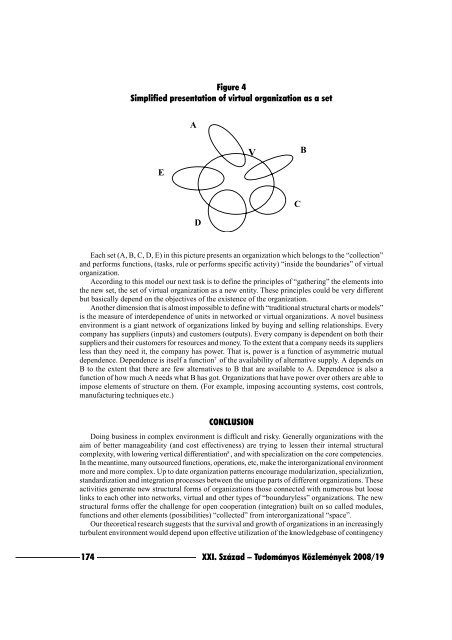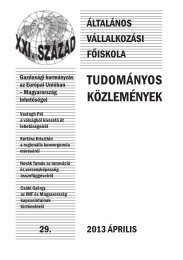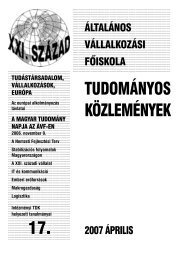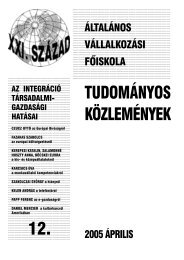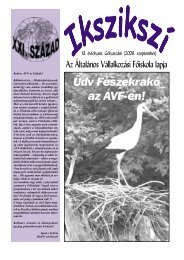Kis- és középvállaltok mint a gazdaságélénkÃtés tényezÅi - Ãltalános ...
Kis- és középvállaltok mint a gazdaságélénkÃtés tényezÅi - Ãltalános ...
Kis- és középvállaltok mint a gazdaságélénkÃtés tényezÅi - Ãltalános ...
You also want an ePaper? Increase the reach of your titles
YUMPU automatically turns print PDFs into web optimized ePapers that Google loves.
Figure 4<br />
Simplified presentation of virtual organization as a set<br />
A<br />
V<br />
B<br />
E<br />
C<br />
D<br />
Each set (A, B, C, D, E) in this picture presents an organization which belongs to the “collection”<br />
and performs functions, (tasks, rule or performs specific activity) “inside the boundaries” of virtual<br />
organization.<br />
According to this model our next task is to define the principles of “gathering” the elements into<br />
the new set, the set of virtual organization as a new entity. These principles could be very different<br />
but basically depend on the objectives of the existence of the organization.<br />
Another dimension that is almost impossible to define with “traditional structural charts or models”<br />
is the measure of interdependence of units in networked or virtual organizations. A novel business<br />
environment is a giant network of organizations linked by buying and selling relationships. Every<br />
company has suppliers (inputs) and customers (outputs). Every company is dependent on both their<br />
suppliers and their customers for resources and money. To the extent that a company needs its suppliers<br />
less than they need it, the company has power. That is, power is a function of asymmetric mutual<br />
dependence. Dependence is itself a function 7 of the availability of alternative supply. A depends on<br />
B to the extent that there are few alternatives to B that are available to A. Dependence is also a<br />
function of how much A needs what B has got. Organizations that have power over others are able to<br />
impose elements of structure on them. (For example, imposing accounting systems, cost controls,<br />
manufacturing techniques etc.)<br />
CONCLUSION<br />
Doing business in complex environment is difficult and risky. Generally organizations with the<br />
aim of better manageability (and cost effectiveness) are trying to lessen their internal structural<br />
complexity, with lowering vertical differentiation 8 , and with specialization on the core competencies.<br />
In the meantime, many outsourced functions, operations, etc, make the interorganizational environment<br />
more and more complex. Up to date organization patterns encourage modularization, specialization,<br />
standardization and integration processes between the unique parts of different organizations. These<br />
activities generate new structural forms of organizations those connected with numerous but loose<br />
links to each other into networks, virtual and other types of “boundaryless” organizations. The new<br />
structural forms offer the challenge for open cooperation (integration) built on so called modules,<br />
functions and other elements (possibilities) “collected” from interorganizational “space”.<br />
Our theoretical research suggests that the survival and growth of organizations in an increasingly<br />
turbulent environment would depend upon effective utilization of the knowledgebase of contingency<br />
174<br />
XXI. Század – Tudományos Közlemények 2008/19


